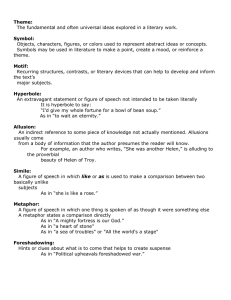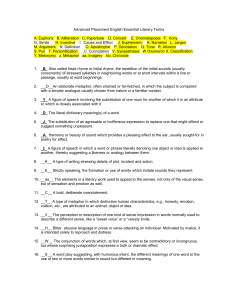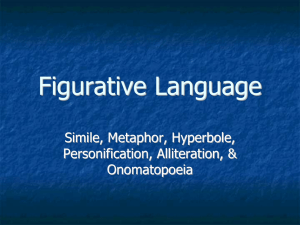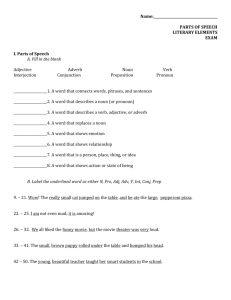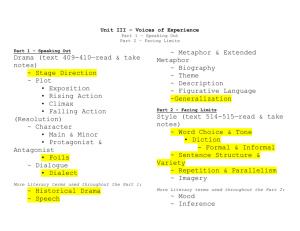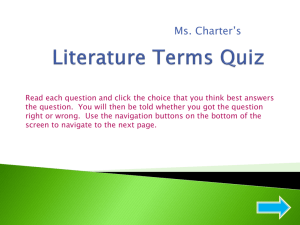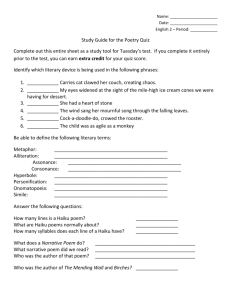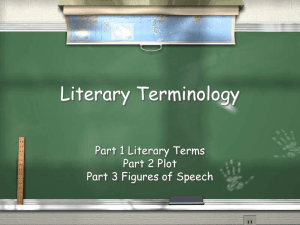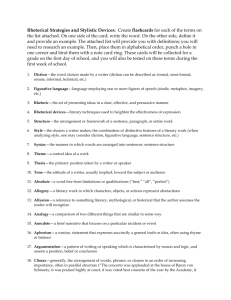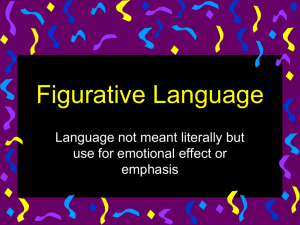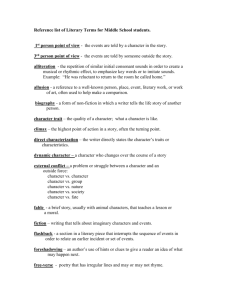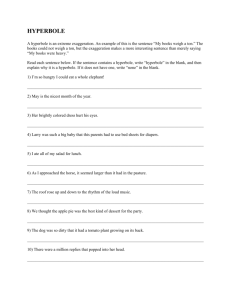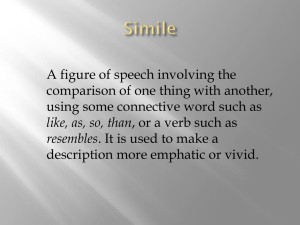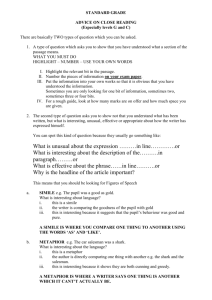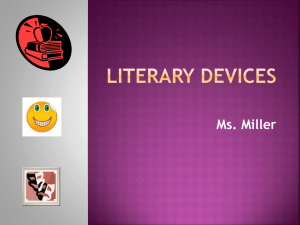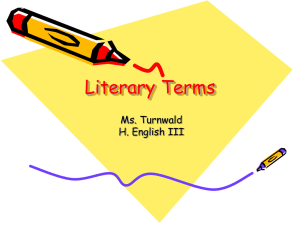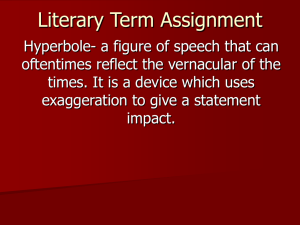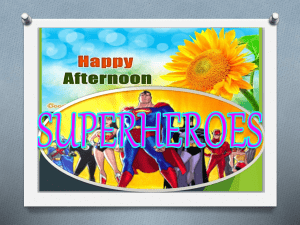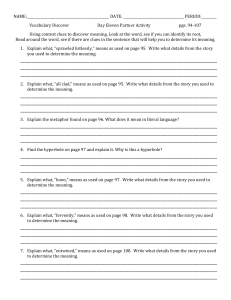Metaphors and Similes
advertisement
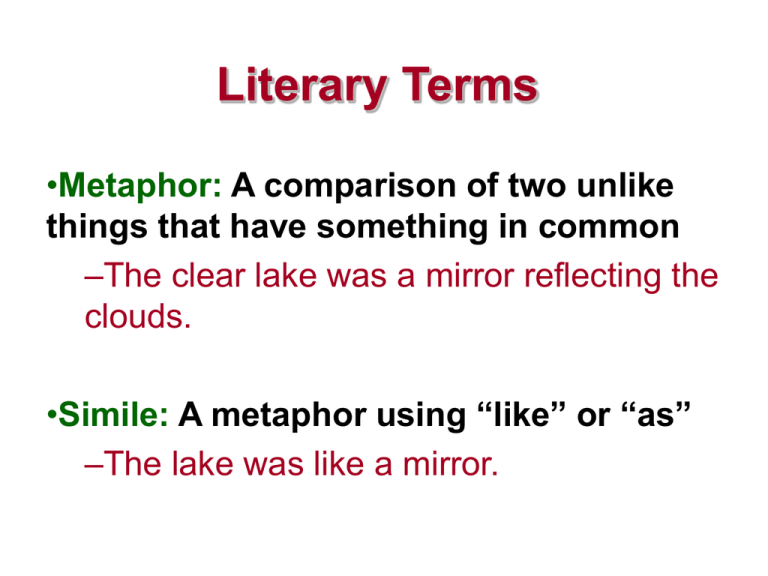
Literary Terms •Metaphor: A comparison of two unlike things that have something in common –The clear lake was a mirror reflecting the clouds. •Simile: A metaphor using “like” or “as” –The lake was like a mirror. • Irony: The contrast between what we expect and what actually happens – He was so busy helping other people study that he did not study himself and failed the test. • Alliteration: The repetition of initial consonant sounds – Come quickly, Ken! – She sells sea shells down by the sea shore. • Hyperbole: exaggeration to make a point – My backpack weighs a ton! • Personification: Giving human qualities to an inanimate object – The wind screamed all night. • Onomatopoeia: Words that imitate the sounds they refer to --The bacon sizzled and crackled in the pan. •Foreshadowing: Hints and clues that tip the reader off as to what is to come later in the story –Nothing bad had happened…yet. •Tone: The writer’s attitude towards his or her subject –Examples: amused, objective, angry, etc. •Mood: Atmosphere or feeling that a literary work conveys to the reader. –Examples: scary, happy, tension, anticipation, suspenseful • Understatement: when a writer or speaker deliberately makes a situation seem less important or serious than it is. (opposite of hyperbole) – It’s only 32 degrees below zero outside. Just a bit chilly. • Euphemism: A phrase used in place of something disagreeable or upsetting – He passed away. – She has a bun in the oven. – I need to use the facilities (restroom). • Exposition: Characters, setting and conflict are introduced. • Rising Action: Conflict begins to develop producing interest and suspense. • Climax: The turning point of the story; character(s) in conflict must make a decision. • Falling Action: Loose ends are beginning to be tied up. • Resolution: Story comes to a reasonable ending.
